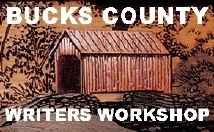Bucks County Writers Workshop

CHECKLIST FOR CRITIQUING (AND WRITING)
Understanding the Craft and the Art
by Don Swaim
After reading critiques of my own work from the writers group, it began to dawn on me that some of us, most of us, weren't completely sure of what to look for in terms of analyzing the material as writers or critics.
So I set up an eight-step checklist to help us analyze the work we read so we can critique it better--and thus better understand our own work. No one has to use it, but I'm pretty sure the checklist covers much of the ground we need to cover in order to articulately critique the submissions to the group. The checklist applies, for the most part, to non-fiction as well as fiction.
It's my own list, but I welcome the input and insights of others in the workshop. But before I unveil the checklist...
I asked the following questions to help me determine what should constitute a list like this, and here they are:
Is the opening sentence/paragraph compelling enough to send the reader further into the manuscript?
Are the characters not only believable, but do they stand out as individuals, not mere ciphers or, god forbid, stereotypes?
Does the dialogue sound as though real people are speaking, not characters reciting speeches?
Has the author spared us from repetition, redundancy, unnecessary explanation or description by using the fewest words possible to achieve the greatest impact?
Are we reading a story that hasn't been told before or is it a weak variation of the tired old themes?
And as a corollary to the above...
Are there fresh insights into the human condition or societal issues, or is the writer merely repeating that which we already know (and we know a lot)?
Has the author merely told us about the inner workings of a character or has he shown us, through the character's words and actions.
Is the author consistent in the narrative's point of view--or has he skipped around to the extent that we're unsure of whose story is being told?
Has the author spellchecked and punctuated the manuscript properly?
Has the manuscript been formatted to industry specifications?
Here's the checklist:
1. Compelling beginning
2. Believable characters
3. Realistic dialogue
4. Command of language
5. Fresh insights
6. Show or tell
7. Point of view
8. Formatting
From Bill O'Toole, who thinks "voice" should be included: "Voice is the entire spectrum of the writer's mind, communicated to the reader in the form of written prose. It is unique to each writer and conveyed by word selection, sequence of ideas, tone and depth of the piece. It is just that, the voice we hear in our heads when we are reading non-dialogue segments of a work. It is the internal monologue of the writer."
Alan Shils contributes two other points: "Avoid abusive words such as: up, over, out, etc. Avoid wordiness of descriptions, etc. to the harm of the story."
If we could focus on these issues when we critique a story I think it would not only help the writer, but all of us as writers. Give it a shot and maybe it'll spare us from anarchy or the blind shepherding the sightless.
Bucks County Writers Workshop
